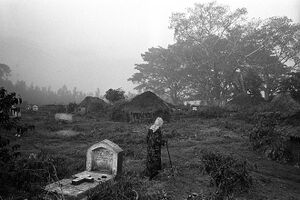Seeds of Change Chapter 15: Promote engagement
From Vincentian Family News Blog's introduction to the Systemic Change: Seeds of Change series: Pope John Paul II encouraged people to analyze the situation of the poor carefully, to identify the structural roots of poverty, and to formulate concrete solutions.
This article continues a twenty chapter series offered by the members of the Commission for Promoting Systemic Change about strategies that are useful, often even essential, for bringing about such change.
Adopting as its starting point a group of projects in which systemic change has actually taken place, the Commission analyzed stories of leaders of successful projects. From these stories, the Commission sought to identify the strategies that helped produce lasting change. It soon became clear that many of the strategies that led to structural changes and transformed the circumstances of individuals and communities flowed from the Gospels and from our Vincentian tradition.
Systemic Change Strategy Fifteen: Promote engagement in the political process, through civic education of individuals and communities.
by Gene Smith

Start with these facts: four hundred people banished because of leprosy build a community of sorts in a cemetery. They dwell among the grave stones in tiny huts built of trash. Vultures circle overhead; below, dogs forage and foul; underground, some in graves perhaps not deep enough, are decomposing human remains.
In this dreadful environment, Daughters of Charity saw the possibility for healing and change that would shift the reality and possibilities for people who might have thought their lives were beyond hope.
Over three years, Sister Tsigue and Sister Ayelech first brought direct help of food, water and clothing. And they began to educate both the children and the village leaders.
Education for the elders included learning about justice. About, for example, the responsibility of the greater community to promote the common good.

And the Sisters called the community to action.
Together, the sisters and elders began to visit the local municipality to demand land for the 58 families of the village. At first, the municipality did not respond favorably. In an effort that calls to mind Jesus’ parable of the widow who sought justice from the unjust judge, the Sisters and the village elders visited the municipality more than 250 times in the course of three years.
Finally their persistence paid off. The Maryam Village community was given a parcel of good land outside the city.
The Daughters obtained funding from an European Foundation for housing and a grant from the Seton Institute to construct a water system for clean water.
The Maryam Village project provides a model of Catholic social teaching in action: promoting the common good and the dignity of every human person. Systemic change is about just such principles.
Frederic Ozanam urged Vincentians to consider the pursuit of justice and related principles even before the Rerum Novarum. He said, “Charity is the Samaritan who pours oil on the wounds of the traveler who has been attacked. It is justice’s role to prevent the attacks.”
Systemic change is justice and this strategy is essential for systemic change.
Index of Systemic Change: Seeds of Change series
